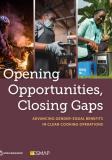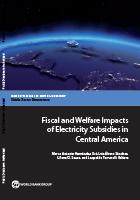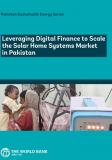Publications
All countries in Central America provide direct electricity subsidies to a majority of residential consumers, in some cases benefiting close to 80 percent of the population. In general, these subsidies entail substantial fiscal costs for countries that are already facing tight budget constraints. This book answers key questions regarding residential electricity subsidies in Central America: How do the subsidy mechanisms function in each country? What are their fiscal costs? How effective have these subsidies been in easing the burden of electricity expenditures on poor households? How efficiently has this spending reached households in need, and what factors drive this effectiveness? What are the reform options?
The main message of this book is that there is considerable scope for improving the efficiency of electricity subsidies in Central America by better targeting them to low-income households. This is the first study to assess the fiscal and welfare implications of electricity subsides in Central America and to simulate policy options aimed at improving the efficiency of spending. The focus of the study is on residential subsidies because these accounts for the largest share of electricity (and energy) subsidies in Central America. This study provides tools for the evaluation of trade-offs when considering policy changes needed in response to higher production costs. Chapter one gives overview. Chapter two describes the evolution of electricity sectors and subsidy mechanisms in each of the six countries of Central America. Chapter three examines the fiscal impacts of electricity subsidies. Chapter four assesses the distribution of benefits of electricity subsidies in terms of their ability to reduce the electricity costs of low-income households. Chapter five identifies why the subsidy mechanisms in Central America result in inefficient targeting and a regressive distribution of public spending. Chapter six illustrates the broad trade-offs between reform strategies by simulating fiscal savings, efficiency gains, and welfare impacts of five prospective scenarios in each of the six countries in the region.
Hernández Oré, Marco Antonio; Luis Álvaro Sánchez; Liliana
D. Sousa; and Leopoldo Tornarolli, eds. 2018. Fiscal and Welfare Impacts of Electricity Subsidies in Central America. Directions in Development. Washington, DC: World Bank. doi:10.1596/978-1-4648-1104-3 License: Creative Commons Attribution CC BY 3.0 IGO. https://openknowledge.worldbank.org/handle/10986/28504


